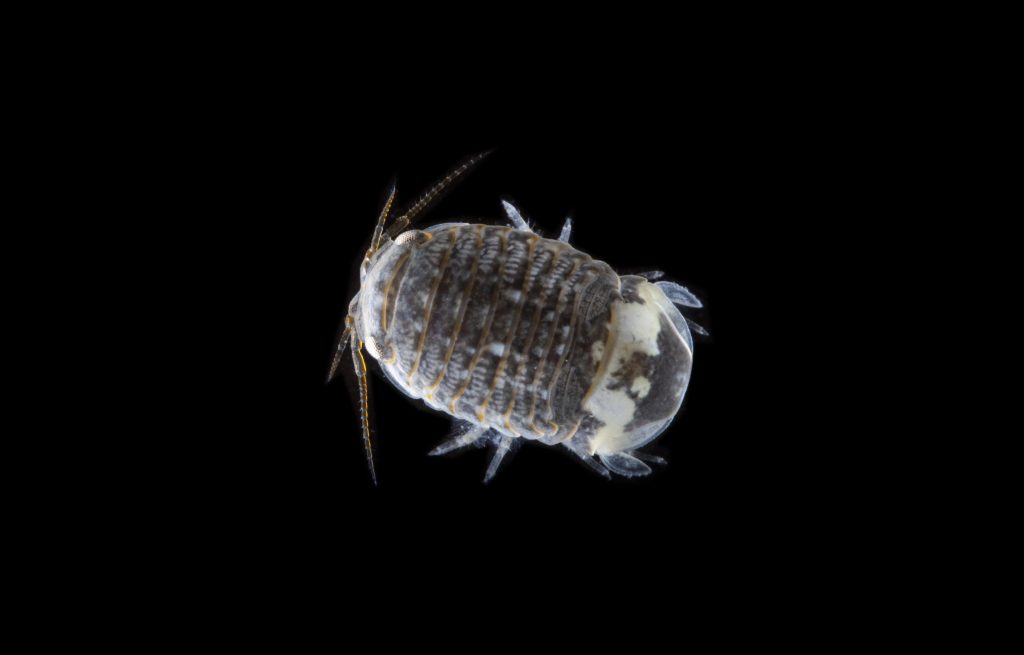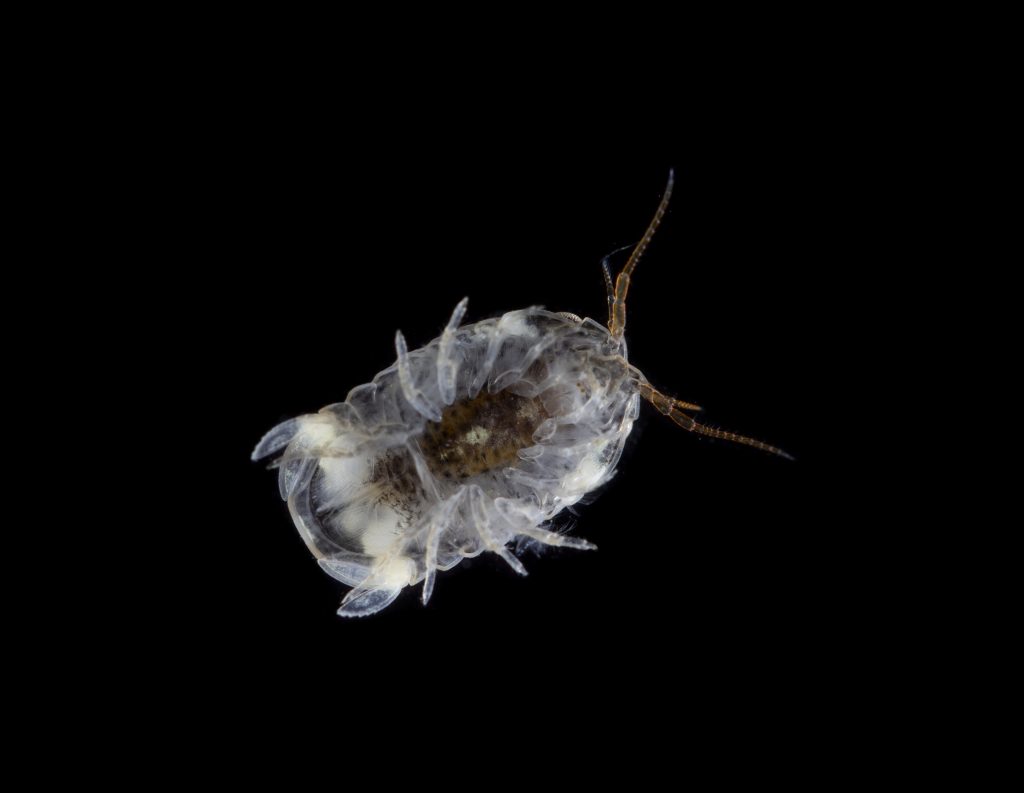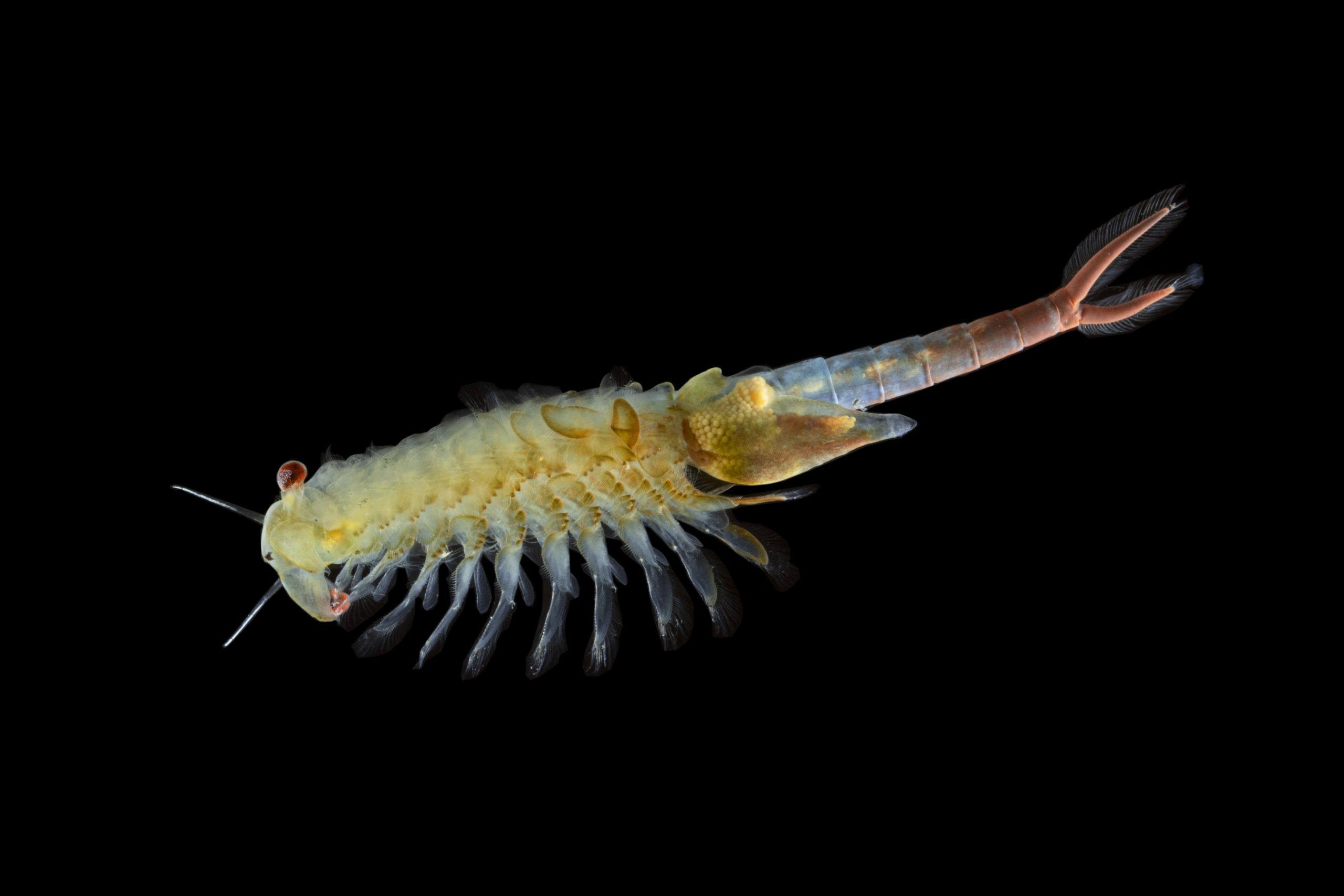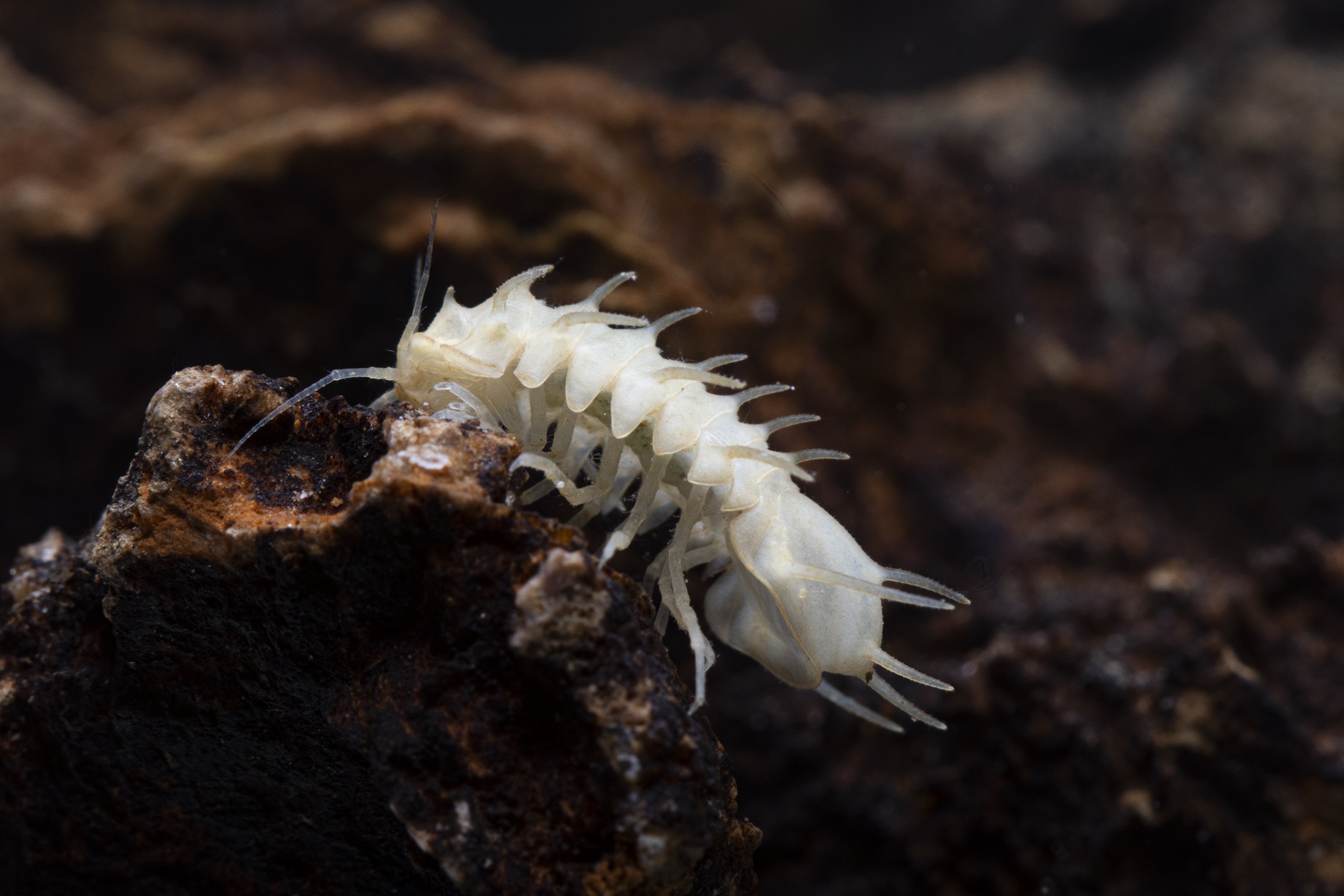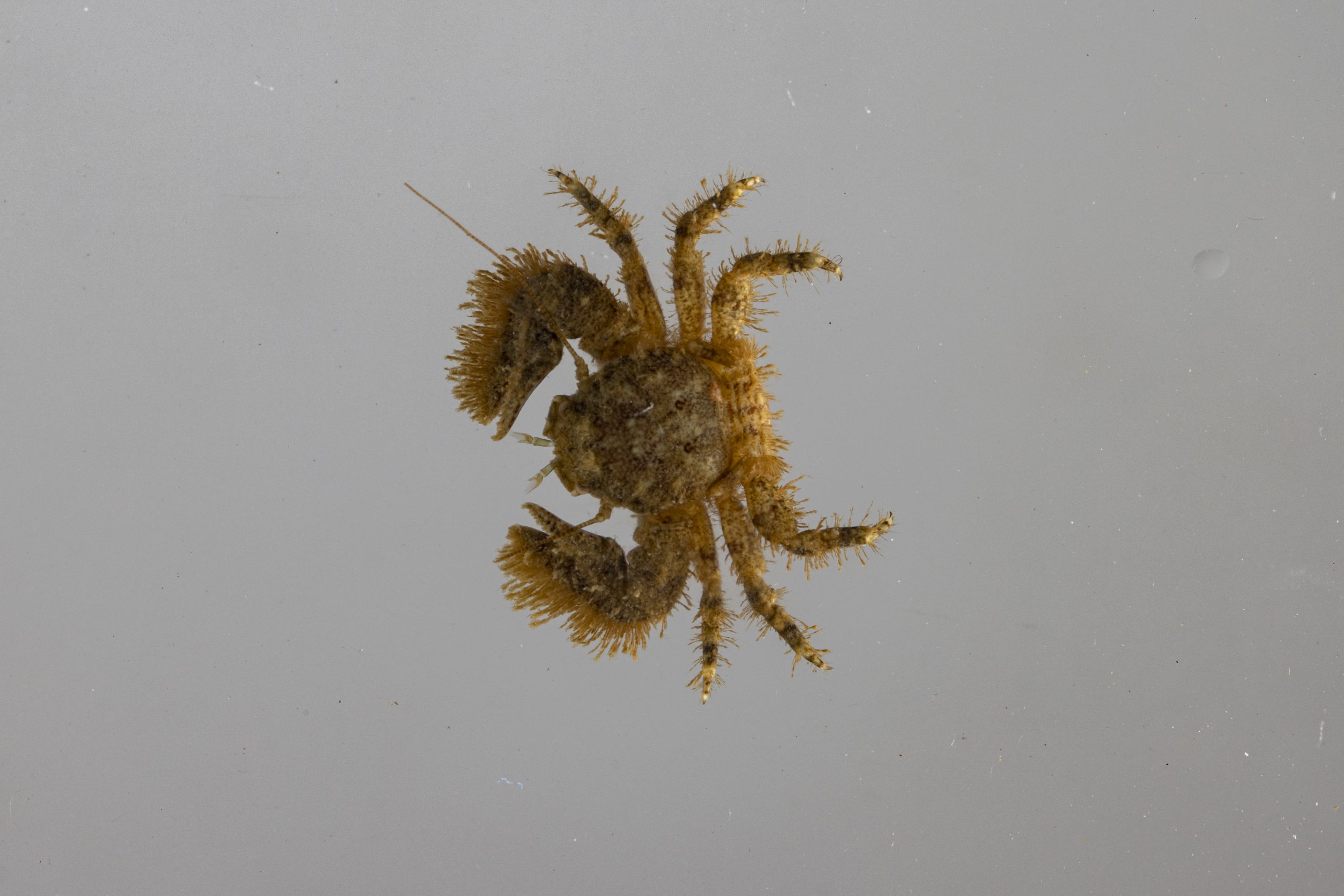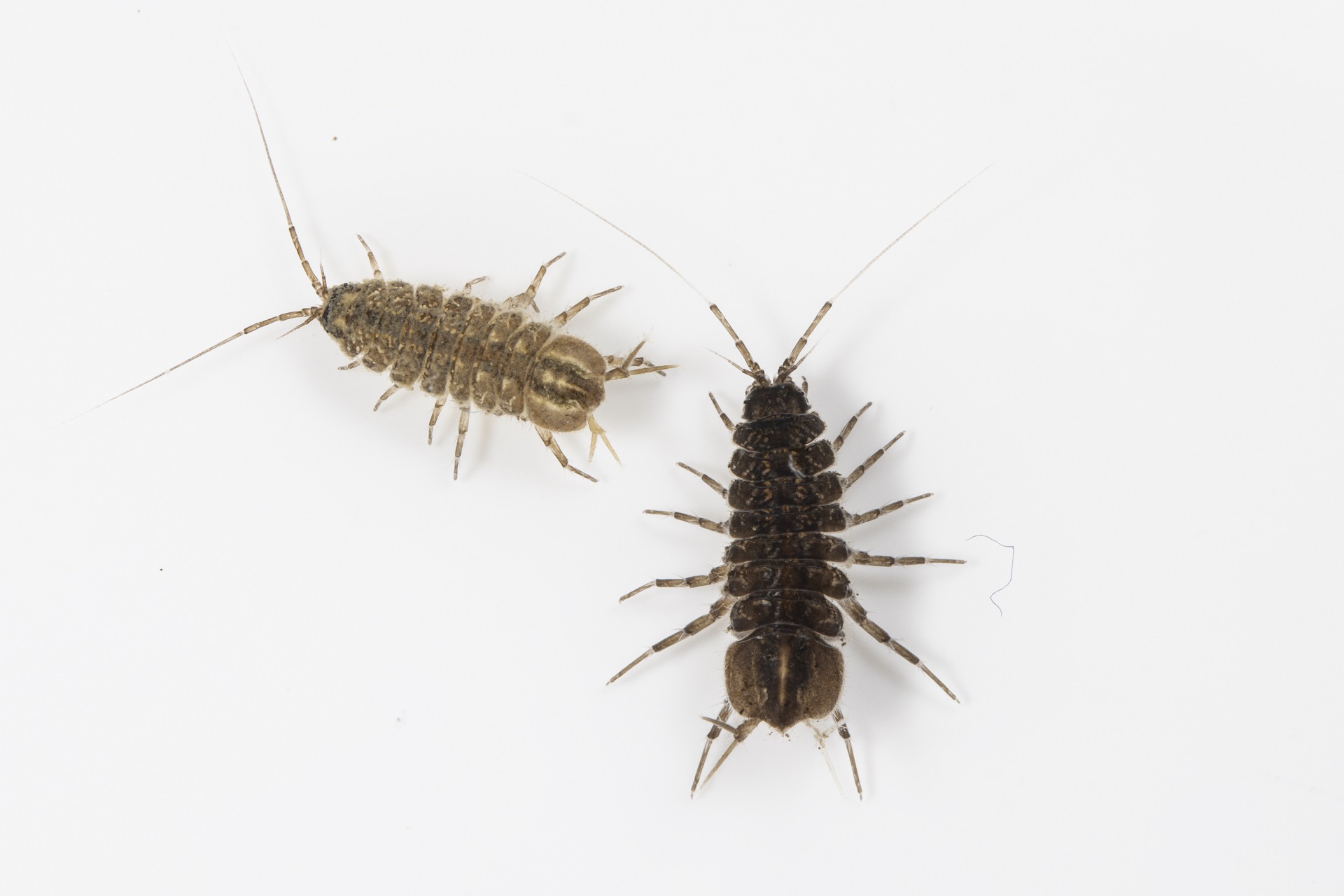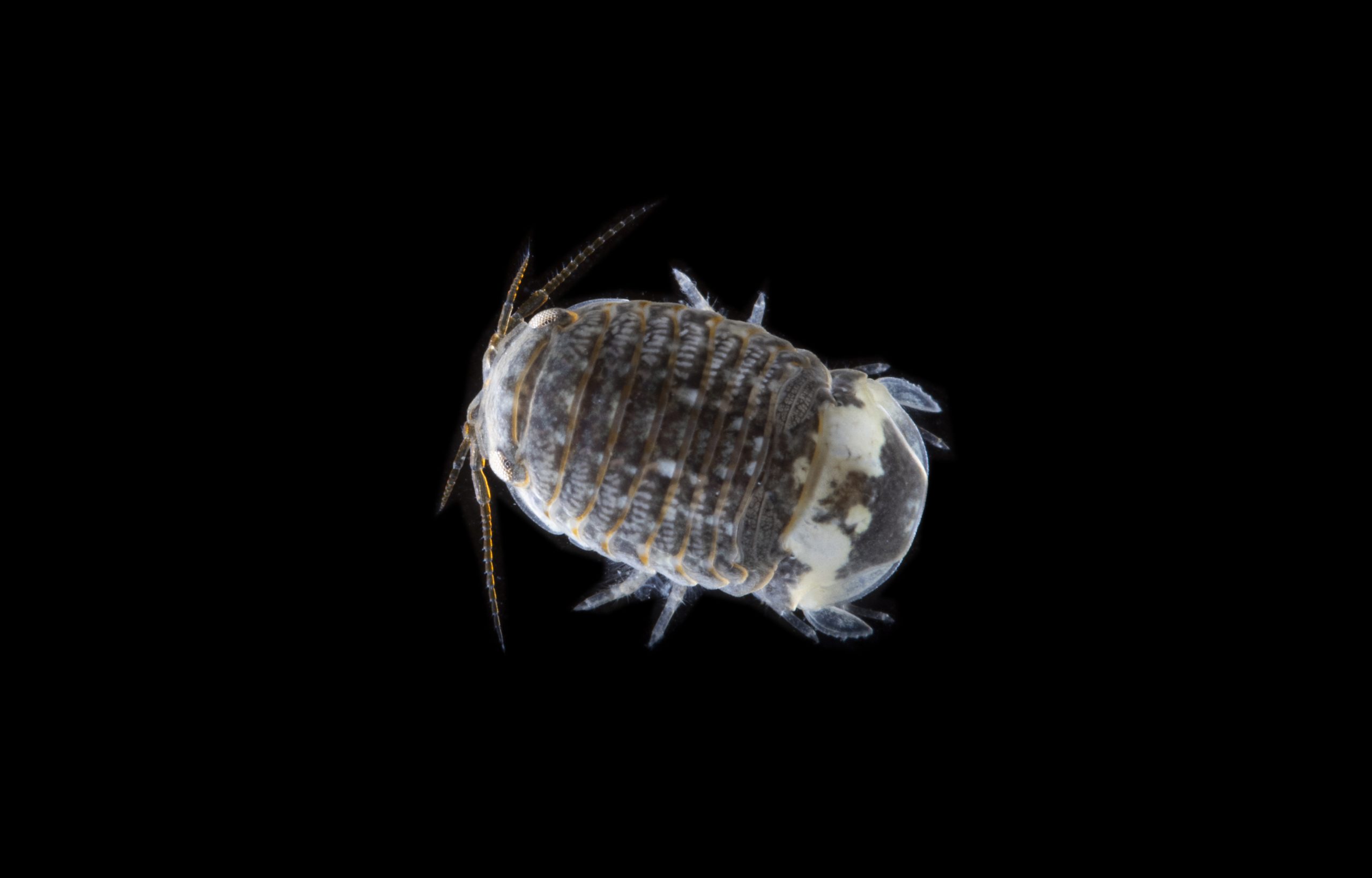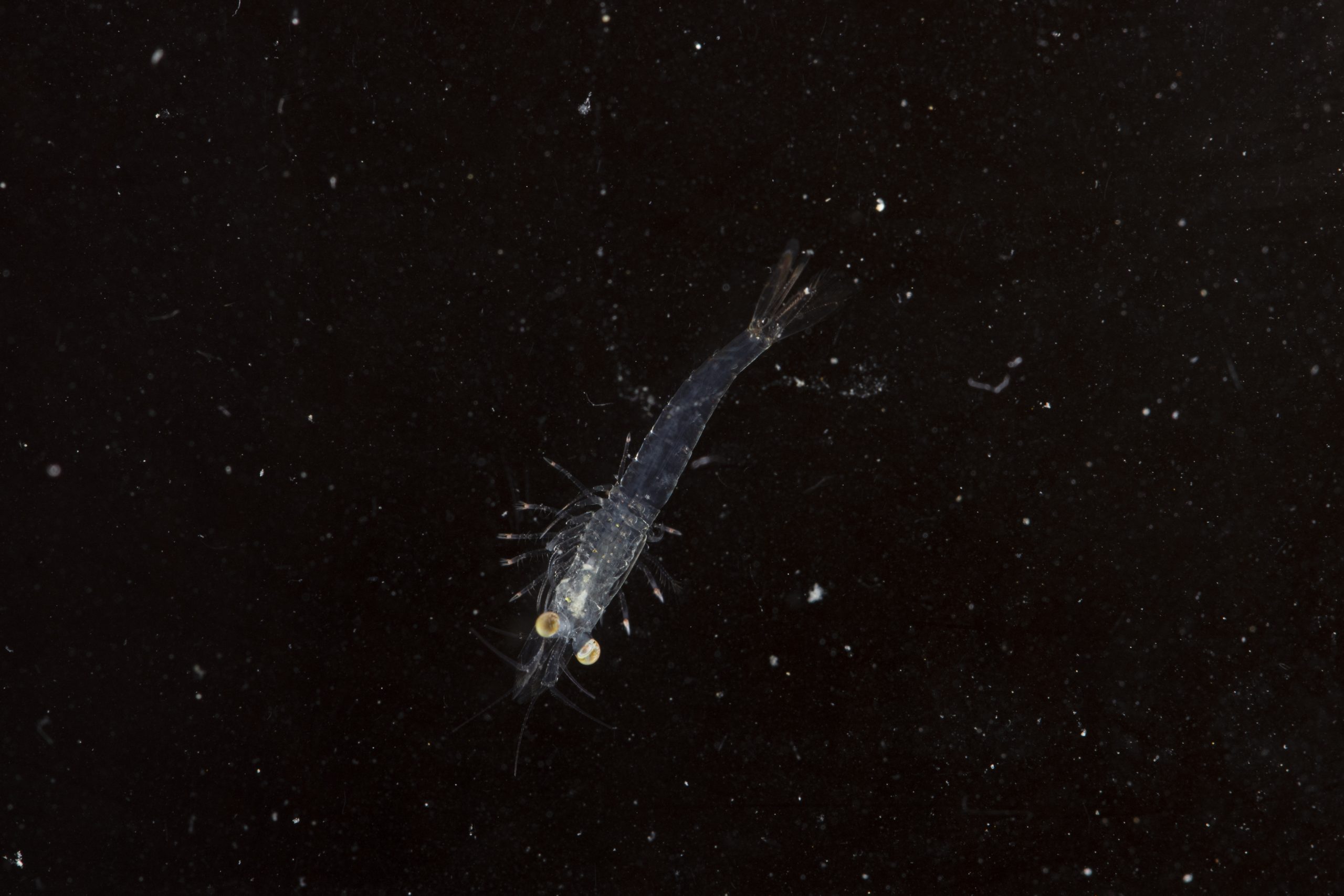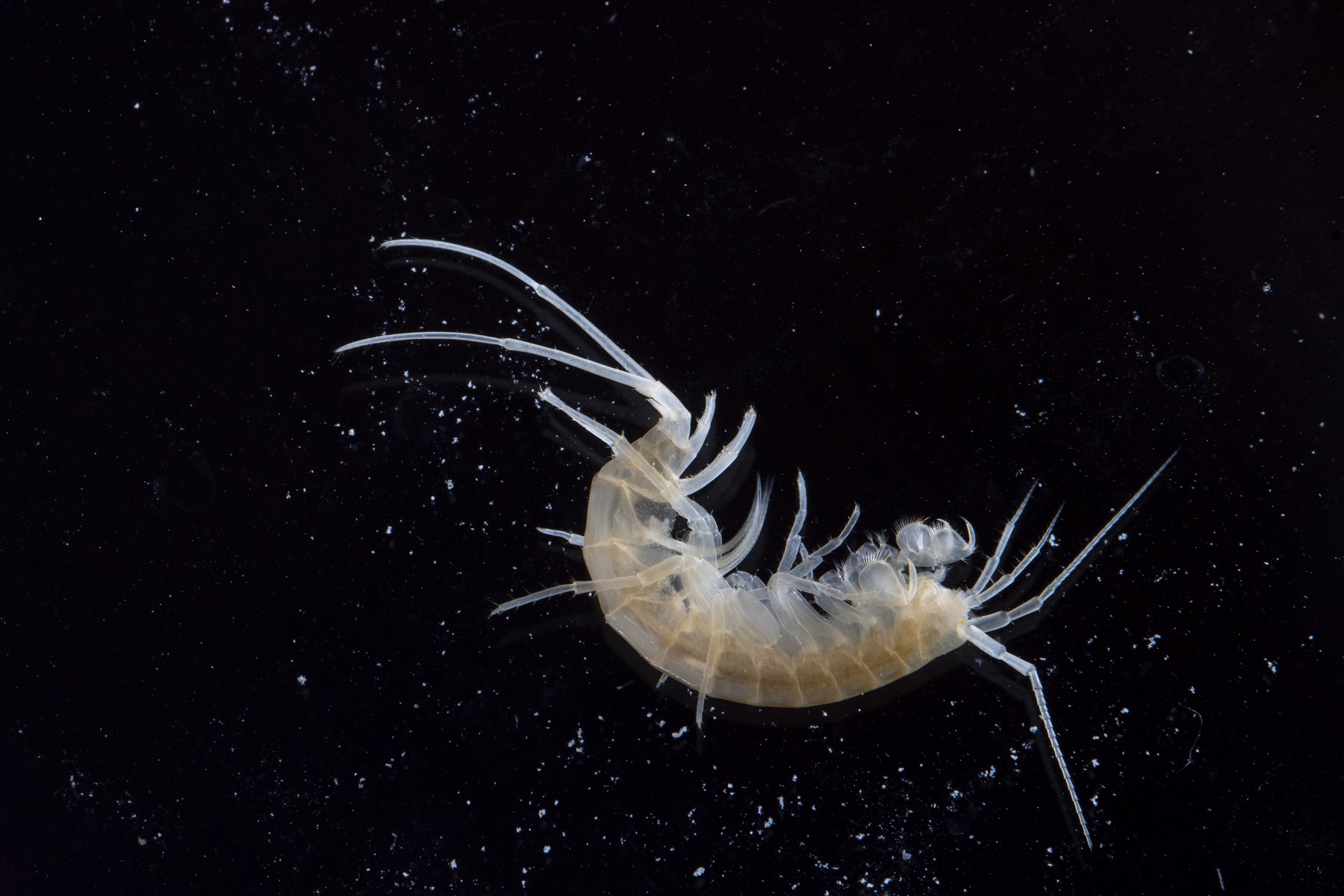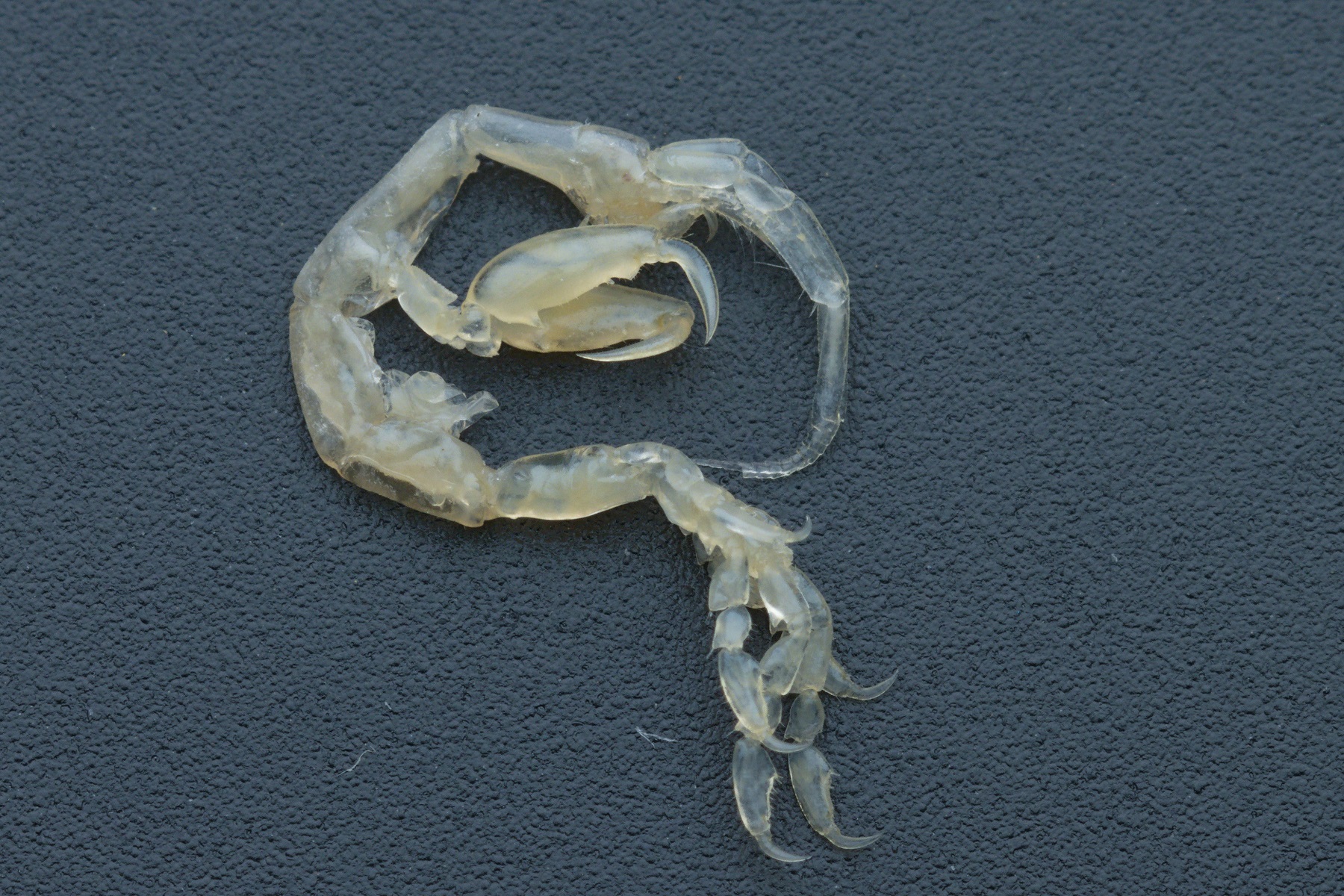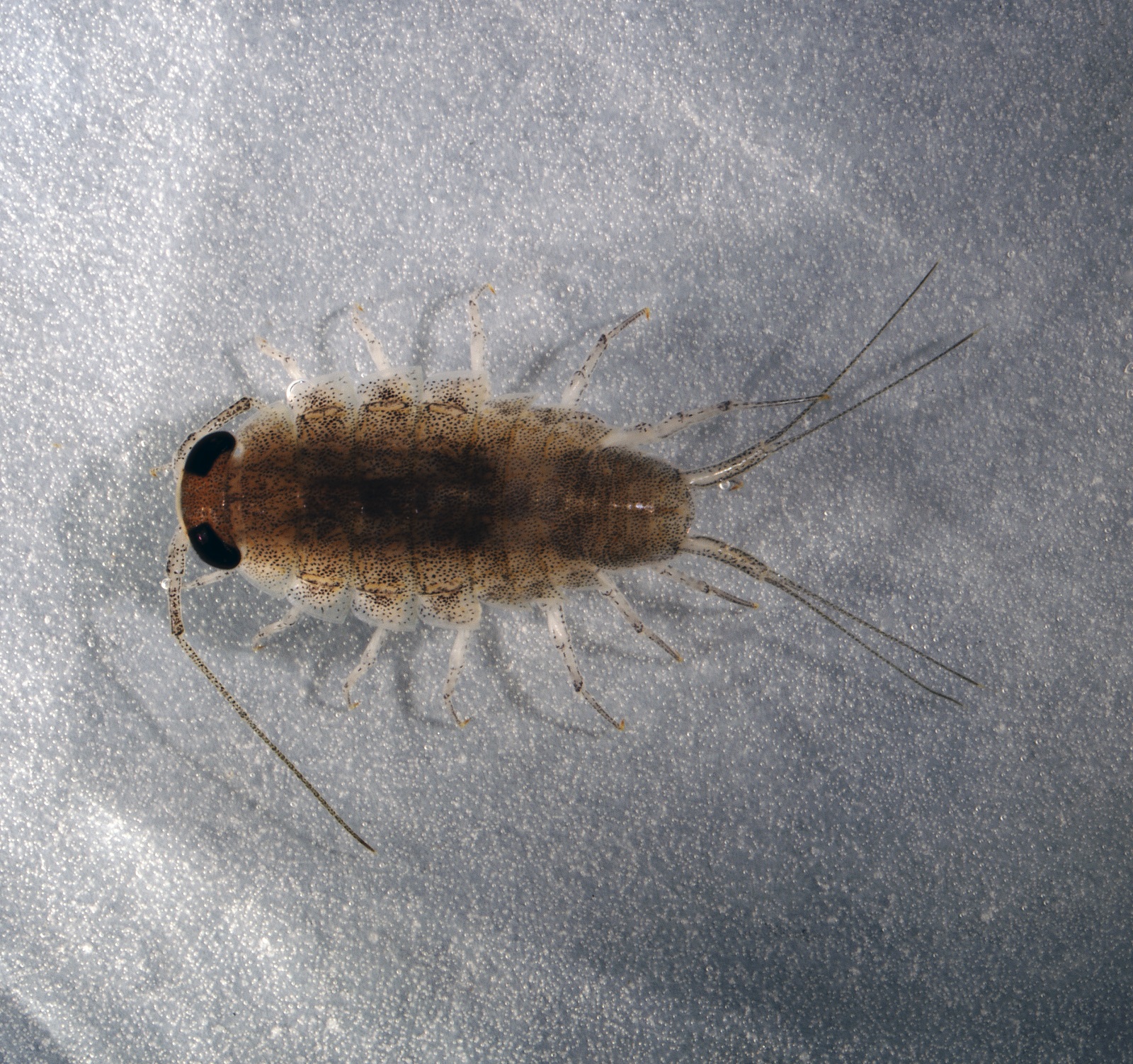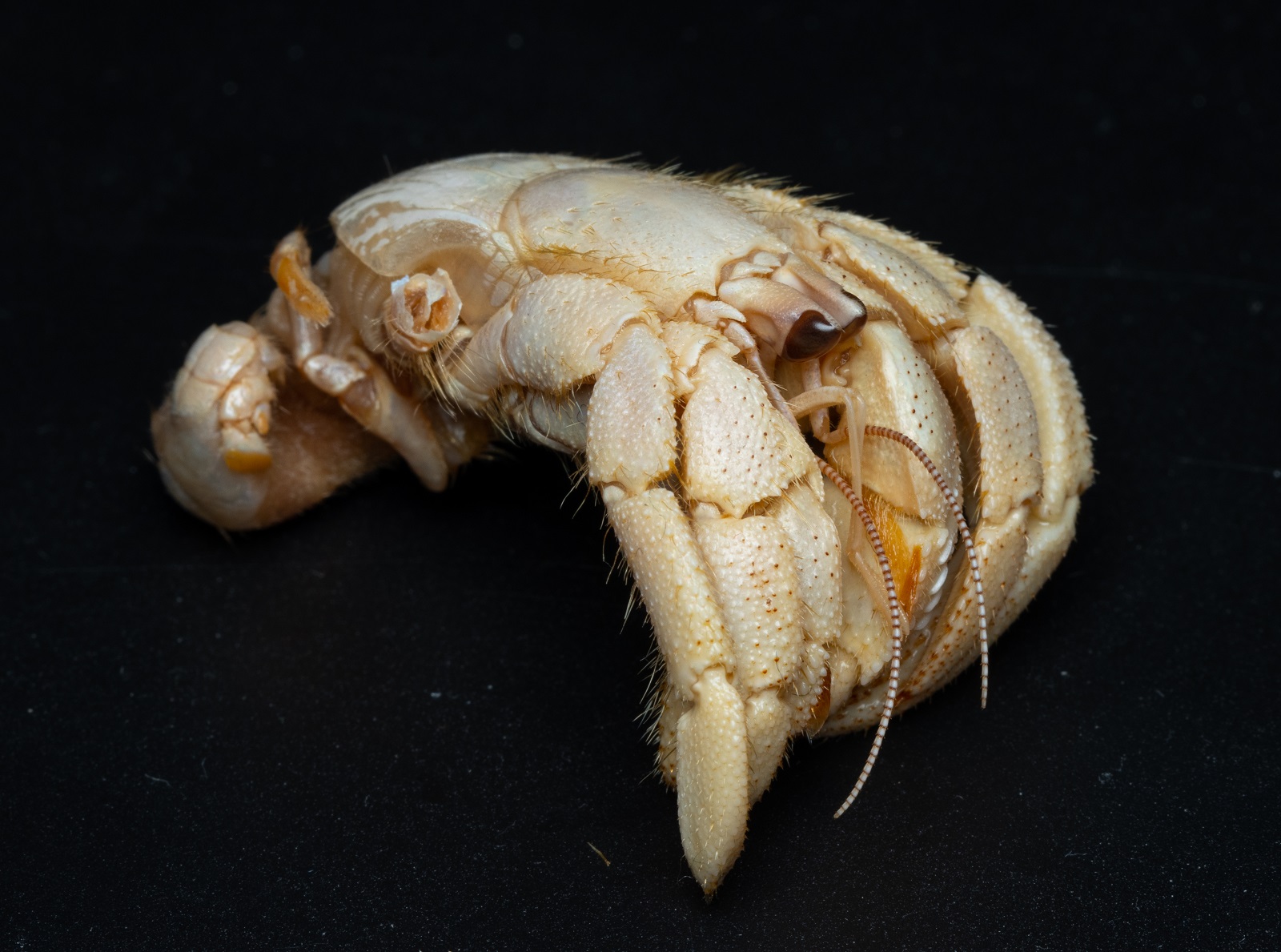- Crustaceans
Sphaeroma serratum
Sphaeroma serratum is an approximately one centimeter large marine isopod that belongs to the family of seapills (Sphaeromatidae). In danger it can roll its arched body into a tight ball. Individuals can be differently colored. They can be flecked, bright yellow to dark gray or even reddish brown. The males are a bit larger than the females. Their body consists of a cephalothorax, pereon, and pleon (abdomen). The cephalothorax and pleon are relatively small with pereon being the most prominent body region.
The cephalothorax includes an acron, five head segments, and an additional body segment, which are all fused into a uniform functional unit. The head bears compound eyes and two pairs of filiform antennae. Antennae II are somewhat longer than the antennae I, but do not exceed one half of the body length. Antennae play an important role in chemo- and mechanoreception. The mouthparts comprise a pair of mandibles, a pair of maxillae I, a pair of maxillae II and a pair of maxillipeds. Evolutionary, the maxillipeds are modified appendages of the first thoracic segment.
The pereon is composed of seven clearly delimited segments (pereomeres), each carrying a pair of appendages (pereopods). All pereopods are alike, cylindrical walking legs. In females, a marsupium is developed at the ventral side of the pereon after the parturial molt. The female lays fertilized eggs into the marsupium, which provides a safe environment for the development of offspring. The marsupium is basket-shaped and is formed by oostegites, which are leaf-like outgrowths at the coxae of the second to fourth pair of pereopods.
The pleon is comprised of six segments (pleomeres) and a telson. Due to the pleomere fusion the segmentation of pleon is obscured and appears tripartite. The first pleomere is small, inconspicuous, and hidden beneath the tergite of the seventh pereomere. The second and third pleomere are fused into a uniform unit. The last three pleomeres are fused with telson into a uniform pleotelson. The five pairs of appendages on the pleon (pleopods) are biramous, leaflike, and function as gills, ventilate the marsupium, and aid in swimming. In males the second pair is modified as gonopods, which are used to transfer the sperm. The last, sixth pair of appendages on the pleon are uropods, which are flattened, flap-like, with a serrated outer edge on the outer rami.
Sphaeroma serratum is widely distributed. It can be encountered in the Mediterranean and Black Sea, along the European and American coasts of the Atlantic, and also along the south African coasts. It inhabits seashores in the intertidal zone where it hides under stones and in crevices. A very similar Lekanesphaera hookeri lives in brackish water of salt marshes, shallow lagoons, and estuaries.
Sphaeroma serratum is a detritivore. It feeds on decaying organic material and biofilm of fungi and bacteria growing on the rocky substrate.
The amazing diversity of coloration between individuals of S. serratum is not yet completely explained but is probably a result of natural selection. Pigmentation has at least two important roles. It provides protection against the UV radiation which is intense in the habitat of S. serratum. The pigmentation also acts as a camouflage, allowing the animal to hide in its environment and thus protect it against predation. Different types of coloration in S. serratum are genetically determined, and the abundance of different coloration types varies between different habitats and geographic locations. However, the coloration is also extremely plastic and can be modified in accordance with changes in the environment. With redistribution of the pigment in melanophores, S. serratum can change its coloration in a matter of hours and adapt to a new environment. The coloration can be changed also during the course of the day. The individuals are darker during the day and lighter during the night. These daily changes follow the circadian rhythm and occur also if the animal is constantly in the dark.
Besides conglobation (rolling into a ball) and camouflage, S. serratum employs two other anti-predator mechanisms. It is a good and fast swimmer, which surely also played a role in its global-wide distribution. They swim with ventral side up, due to their high center of gravity. These isopods also aggregate in large groups with conspecifics which reduces the risk of an individual becoming prey.
More photos
Related arthropods

Authors
- Urban Bogataj,
- Gregor Bračko,
- Teo Delič,
- Cene Fišer,
- Žiga Fišer,
- Rok Kostanjšek,
- Rudi Verovnik,
- Miloš Vittori,
- Valerija Zakšek.
Students Vito Ham, Vesna Jurjevič, Gaj Kušar, and Adrijan Samuel Stell Pičman also participated in the project.
